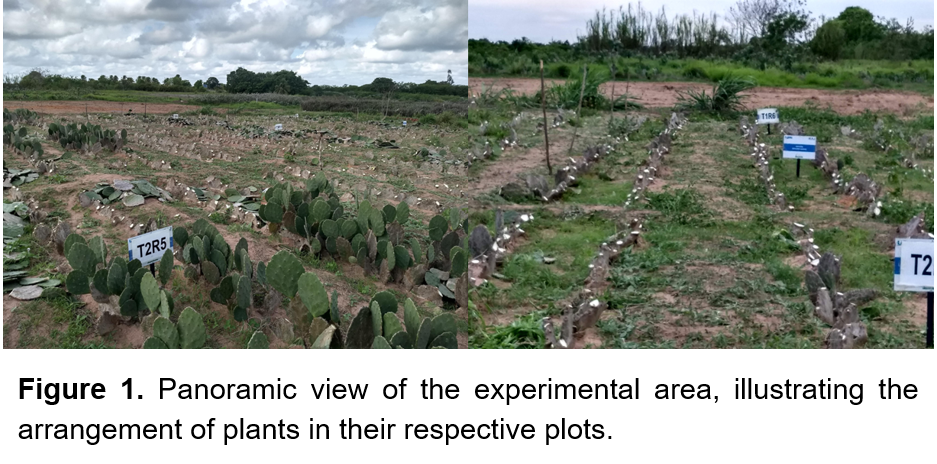Effect of using hydrogel polymers on morphometric, forage production, and nutritional characteristics of cactus pear
DOI:
https://doi.org/10.56890/jpacd.v26i.535Abstract
The use of cactus pear has shown poor performance in some areas of semi-arid climate regions, as the species needs a wide gradient between temperatures during the day and night to develop, which does not occur in such zones. To lessen this negative occurrence, moisture availability provides better performance for the species, such as using hydrogel instead of irrigation. The objective of this study was to evaluate the effect of using hydrogel polymers on the production of cactus pear (Opuntia stricta cv. Mexican Elephant Ear). Three treatments with six replications were used, totalling 18 experimental units. The treatments were, (1) Conventional fertilization using fertilizer in granulated format; (2) Foliar fertilization with polymer using a dilution dose of 6 grams of polymer L-1 of water associated with the fertilizer in liquid form through the foliar route; (3) Foliar fertilization without polymer using only foliar fertilization in the same formulation as the treatment with polymer. There was no effect of fertilization strategy on plant height, cladode length, cladode width, cladode thickness, cladode area, and biomass. There was an effect of the fertilization strategy on dry matter, in which higher estimates were measured for conventional fertilization and foliar fertilization without polymer. On the other hand, foliar fertilization with polymer promoted increases of 13% in mineral matter and 42% in crude protein in relation to conventional fertilization. The fertilization strategy did not change the other chemical attributes of cactus pear. The use of the hydrogel did not influence the morphometric development of the Mexican Elephant Ear cultivar but promoted increments in the chemical composition.
Publication Facts
Reviewer profiles N/A
Author statements
Indexed in
- Academic society
- Journal of the Professional Association for Cactus Development
- Publisher
- Professional Association for Cactus Development




